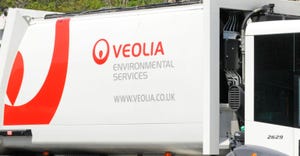INSURANCE: Understanding the Risks Helps Carriers Reduce Costs
August 1, 1999
The cost of pollution liability insurance is falling. Meanwhile, coverage is improving. So, now that environmental insurance products are a better buy, how does one make a choice?
Pollution liability insurance (PLI) has been available since the 1970s. It was intended to cover environmental liabilities from non-sudden and non-accidental conditions that were expressly excluded under comprehensive general liability (CGL) policies.
CGL policies cover occurrences of bodily injury or property damage during the policy period. By comparison, PLI policies cover claims made upon the insured and reported to the insurance company during the policy period.
Another difference between the policies involves defense costs. The CGL policy includes a commitment by the carrier to defend the insured, and the costs of such defense are not included in the policy limits. On the other hand, the PLI policy gives the insurance company the opportunity (but not the obligation) to defend, and defense costs are chargeable to the policy's overall liability limits.
A PLI policy usually covers only contamination at or originating from a site designated in the policy. However, unlike CGL exclusions, the pollution condition can predate or occur during the policy period. But the environmental damage and cleanup costs have to occur off-site.
PLI policies are restricted further by a requirement that pre-existing pollution conditions (i.e. conditions existing prior to the policy's effective date) be unknown.
The definition of "cleanup costs" and the necessity for a "claim" in order to trigger coverage meant that voluntary cleanup costs could not be covered. Moreover, the definition of "property damage" does not cover diminished value, business interruption and consequential damages. Finally, the contractual liability exclusion impeded risk-shifting through indemnification agreements.
It's important to understand that when carriers entered the environmental insurance market in the late 1970s and early 1980s, they tried using traditional underwriting practices that simply would not work. PLI policies cannot be formulated and priced in the same fashion as CGL policies. The former must be individually risk-rated.
The problem: a relatively unsophisticated and untested environmental engineering industry in the 1970s and early 1980s. The technical experts could not offer much in the way of experience or history to advise the underwriters. And without adequate background information, the insurance industry reacted by restricting coverage and boosting premiums.
These days, the insurance industry seems ready to adapt to and encourage Brownfields redevelopment and other contaminated property transactions with new site-specific policies.
A cleanup cost cap policy helps fill a gap in the PLI policy: coverage for known pollution. It covers a situation where a claim has been filed and a cleanup plan has been approved. It pays the difference, if any, between the anticipated cost of a remedial action plan at a covered location and the actual costs incurred.
Most of these policies define cleanup costs (which must be incurred during the policy period) to include actual remediation, but may not cover monitoring and investigation. Cleanup cost cap policies usually require something akin to a co-payment. Coverage under the policy kicks in only after the site owner or developer pays a predetermined cost plus, say, 10 percent. Thus, a cleanup job priced at $5 million would draw from the insurance company only after the insured paid $5.5 million. Presumably, premiums would decline to the extent an insured undertook a larger co-payment.
A new PLI policy is available from a number of environmental carriers. Coverages vary, but at least three companies address all or nearly all potential liability in a contaminated property transaction: bodily injury and property damage; cleanup costs; legal fees; contractual liability; business interruption; and collateral value loss. More restrictive policies may cover additional liabilities through endorsements.
Notably, carriers seem to be considerably more willing now than ever before to revise their boilerplate wording through endorsements. As a result, owners and developers can obtain policies that are better suited to specific transactions. However, even with greater flexibility by carriers and fewer exclusions and limitations in the basic policy forms, pitfalls abound. Experts advise engaging a credible, experienced broker to help negotiate policy terms and coverages with underwriters.
For more information, see "Cashing in on Lower Insurance Rates," Waste Age July 1999, page 80.
About the Author(s)
You May Also Like




